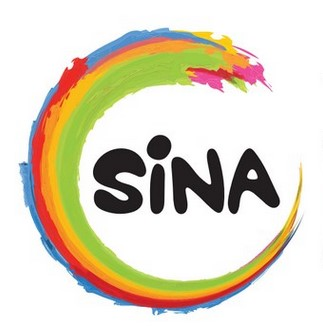Every individual can rise to their fullest potentials regardless of background. SINAs changemaker-maker model enables Africa’s youth, especially those from challenging backgrounds, to become the change they want to see in the world as social entrepreneurs.
Regenerative and Scalable
SINA transforms communities into places where everyone is powerful and can pursue their dreams and create a prosperous and dignified life. With this, SINA’s regenerative and freesponsible movement for self-reliance and collective systemic change contributes to a world that works for everyone.
Beyond Aid
Like caterpillars unable to imagine they can transform and fly, disadvantaged youth and refugees discover their purpose and become social entrepreneurs while leveraging existing strengths to turn challenges into opportunities. The role of disadvantaged youth is reversed from passive recipients of aid to active drivers of their own future, one community at a time.
Founding Story
SINA’s story goes back to 2006. Etienne Salborn finished high school in Germany, and instead of joining the back-then-obligatory military service, he volunteered for one year in the Kankobe Orphanage in Uganda.
One day, a girl in the orphanage asked him for help. She was afraid about her future because she was finishing primary education but did not know what would happen after. She wanted to continue schooling in a secondary school but had no one to support her despite good grades. Etienne realized that almost all the children were in the same position as her. Most children had no chance to continue their educations and were on their own at a young age.
Etienne started to convince family and friends to cover school fees for secondary education in boarding schools. An educational sponsorship program was born. Because it grew by about twelve new children being sponsored yearly, in 2009, Etienne founded Jangu e.V. as a non-profit organization to manage the sponsorship program professionally.
Over the years, he regularly returned to Uganda to care for the project, the sponsored children, and the young adults many had become. The first generation of the sponsored youth finished their Advanced (A)-Levels Examinations in November 2013. Many had gone from believing they had little chance in society to being empowered through education. Nevertheless, they could not join university because of too high tuition fees and could not find employment due to the high youth unemployment in Uganda.
The initial goal of sponsoring the children until they would be self-sustainable was yet to be achieved. Etienne returned to Uganda to dedicate his master’s thesis in “Peace, Development, Security and International Conflict Transformation” to understand the challenges of the Ugandan educational system and look for solutions. In an Open Space Dialogue between the first generation of Jangu e.V. graduates and the students about to finish high school, a solution emerged: a space where the youths would create their own jobs if no jobs were available. The idea of SINA was born. Here is Etienne’s Master Thesis, which laid also an academic foundation to the creation of SINA.
The inaugural SINA Community (called “Jangu International“) was brought to life in 2014 and 2015 through a joint effort of Etienne Salborn, the alumni of Jangu e.V, Ugandan facilitators, and experts from around the world, including Philipp Mäntele. In co-creation, all together develop and live the SINA Framework, with its freesponsible culture and self-organized empowerment concept.
Here is a video from the early days of 2015/ 2016:
The orphans from the first generation became the mentors and leaders for the next generation, passing on the knowledge, skills, and empowerment they had received. This regenerative cycle is the cornerstone of the SINA Model. Scholars become changemaker-makers, and through replication by its beneficiaries into new locations, the SINA Model addresses educational gaps and youth unemployment at its roots, one community at a time.
